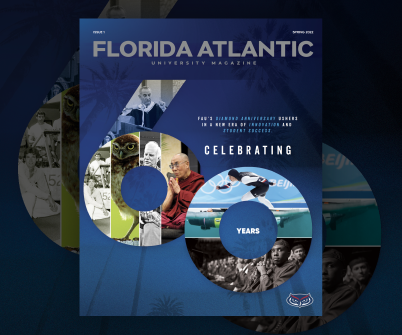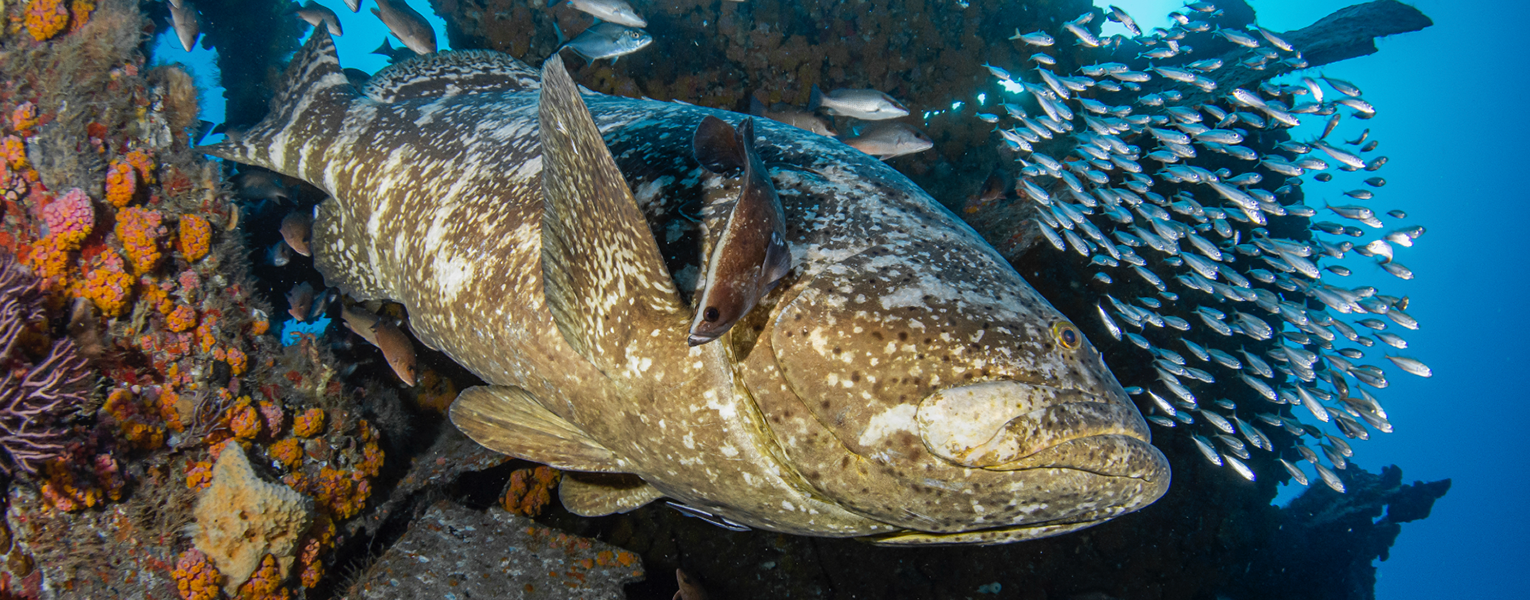 "Tracking Giants" comes from the Florida Atlantic magazine. View stories like this and more at www.fau.edu/newsdesk/magazine.
"Tracking Giants" comes from the Florida Atlantic magazine. View stories like this and more at www.fau.edu/newsdesk/magazine.
7/05/2022
Tracking Giants
Custom Tags to Open World to Goliath Grouper Behavior in the Wild
Reaching lengths of up to eight feet and weighing close to 800 pounds, the Atlantic goliath grouper is a top predator at many of Florida’s offshore reefs. While a crucial component of a healthy ocean ecosystem, little was known about the behaviors of these fish in the wild — until now.
Researchers from FAU’s Harbor Branch Oceanographic Institute and College of Engineering and Computer Science are gaining new insights into the underwater behavior of goliath groupers through the development of a novel multi-sensor tag, which includes everything from a three-axis accelerometer — like that found in your smart phone or watch to measure activity — to a video camera and a hydrophone for monitoring underwater sound. The findings were published in the journal Sensors.
The scientists applied the minimally invasive tags to six groupers to record data on movement and activity, and identified 13 behaviors. They applied both machine-learning and deep-learning methods to classify nine of the 13 behaviors. The most common behaviors were hovering, forward swimming and resting. More sporadic behaviors, including vocalizations, were captured and classified as well.
According to Lauran Brewster, Ph.D., first author and senior research fellow in Harbor Branch’s Fisheries Ecology and Conservation Lab, the new customized tags can inform more about the day-to-day activity of goliath groupers and similar species in the wild. They also can show how behavior might differ between habitat types, such as natural versus artificial reefs, or be affected by human activity, like fishing and diving – ultimately helping us make more informed management decisions.
If you would like more information, please contact us at dorcommunications@fau.edu.
